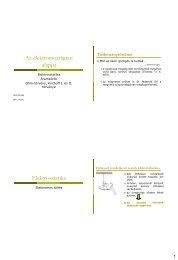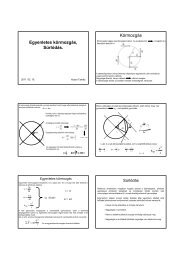Electromagnetic spectrum and the LASER
Electromagnetic spectrum and the LASER
Electromagnetic spectrum and the LASER
You also want an ePaper? Increase the reach of your titles
YUMPU automatically turns print PDFs into web optimized ePapers that Google loves.
The dual nature of <strong>the</strong> light<br />
Wave<br />
(propagation)<br />
• Diffraction<br />
• Interference<br />
• Polarization<br />
Particle<br />
(interaction)<br />
• photoeffect<br />
• Compton-effect<br />
Albert Einstein (1905) : photoelectric effect<br />
photon (light quantum), its energy: E = h·n (or E = h·f)<br />
Louis-Victor de Broglie (1924) : Matter-waves <strong>the</strong>ory<br />
(All materials have wave nature as well.)<br />
λ = h/p, where p is <strong>the</strong> impulse => λ = h/m·v<br />
Polarization<br />
Important physical quantities <strong>and</strong><br />
relations<br />
Frequency: n (1/s)<br />
Wavelength:<br />
� (m)<br />
Wavenumber: n (cm-1 )<br />
c<br />
v<br />
1<br />
�<br />
Energy: E (J) h . n<br />
Extinct. coeff.:� (M -1 cm -1 or (mg/ml) -1 cm -1 )<br />
a<br />
Interference<br />
�x � s � s � a�<br />
sin�<br />
1<br />
2<br />
Einstein: energy of a photon (light-quantum)<br />
To achieve max. gain: To achieve max. weakening:<br />
1<br />
a� sin� � n�<br />
� a�<br />
� � ( n � ) ��<br />
sin 2<br />
Linearly polarized light<br />
2



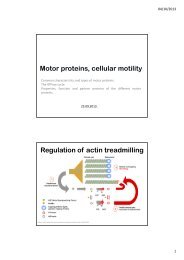
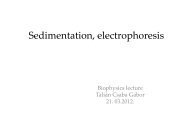
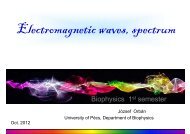
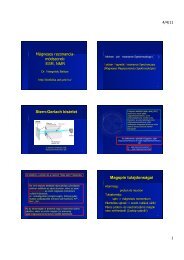
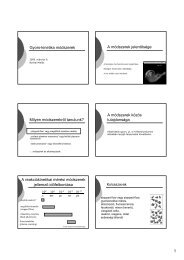
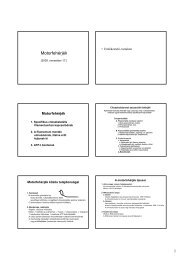


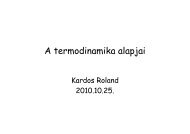


![Microsoft PowerPoint - Intermedier filamentumok [Kompatibilis m\363d]](https://img.yumpu.com/17119137/1/190x135/microsoft-powerpoint-intermedier-filamentumok-kompatibilis-m363d.jpg?quality=85)
